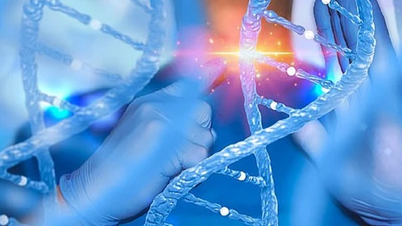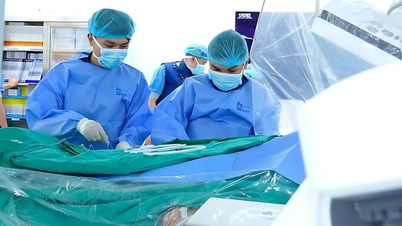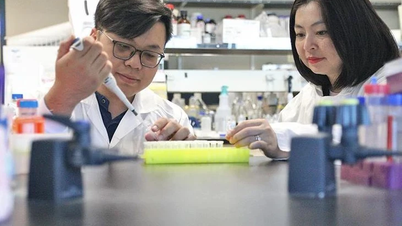
Have you ever wondered: How does the brain know when the body needs to breathe, when the heart beats faster, or when you are sick without ever taking your temperature? The answer lies in a "sixth sense" that most of us do not realize, also known as introspection, the mysterious nervous system that helps the body listen to itself - Photo: AI
A team of scientists at the Scripps Research Institute and the Allen Institute (USA) made headlines when they announced that they would start a $14.2 million project funded by the US National Institutes of Health (NIH) to decode the entire mechanism of this hidden sense. The goal is to create the first detailed map of how the brain monitors and coordinates internal organs, from the heart, lungs, stomach to the immune system.
Professor Ardem Patapoutian, winner of the 2021 Nobel Prize in Physiology or Medicine, is leading the project. Known for his work on the discovery of the mechanical sensors that help the body sense touch and pressure, he is now delving into what scientists call the “inner sense” or sixth sense.
"Interoception is the system that tells your brain when you're hungry, thirsty, or need to breathe more deeply. We want to remap the entire system to understand how the body actually 'hears' itself," explains Professor Patapoutian.
While senses such as sight, smell or hearing receive signals from the external environment, interoception works from the inside, through millions of nerves that continuously transmit signals between organs and the brain. This system helps maintain physiological balance (homeostasis), ensuring the body operates stably in the face of any change.
Yet it is one of the least studied areas of neuroscience. Visceral signals are complex, overlapping, and difficult to measure. These sensory neurons are interwoven throughout the heart, lungs, intestines, kidneys, and more, without clear anatomical boundaries, making mapping them a major challenge for decades.
Thanks to a $14.2 million grant from the NIH, Patapoutian's team, along with colleagues Li Ye, Bosiljka Tasic, and Xin Jin, will pursue two parallel lines of research.
The anatomy section will use neuro-tagging technology combined with full-body 3D imaging to trace the pathways of sensory neurons from the spinal cord to each organ. Meanwhile, the molecular biology section will analyze the genes of different types of neurons, identifying the unique characteristics of neurons transmitting signals from the stomach, bladder, or fat tissue.
When these two datasets are combined, the team hopes to create the first complete map of the human body's internal sensory system, similar to a "Google Maps" for visceral nerves.
Scientists believe this map could pave the way for medical breakthroughs. Because when interoception is disrupted, the body can lose its basic regulatory abilities, leading to cardiovascular disease, high blood pressure, immune disorders, chronic pain, or even neurodegeneration.
“Interoception is the foundation of nearly every aspect of health, but we are only just beginning to understand it,” said co-author Dr. Xin Jin. “If we understand how the brain communicates with the body, we can figure out how to restore that balance when it is disrupted.”
The project is part of NIH's High-Risk, High-Reward Research program, which supports bold scientific ideas that have the potential to revolutionize medicine. With this project, researchers hope that the sixth sense that exists in each person will gradually be deciphered, opening up a completely new perspective on the human body and brain.
Source: https://tuoitre.vn/my-chi-14-2-trieu-usd-de-giai-ma-giac-quan-thu-sau-20251014085122178.htm















































































































Comment (0)